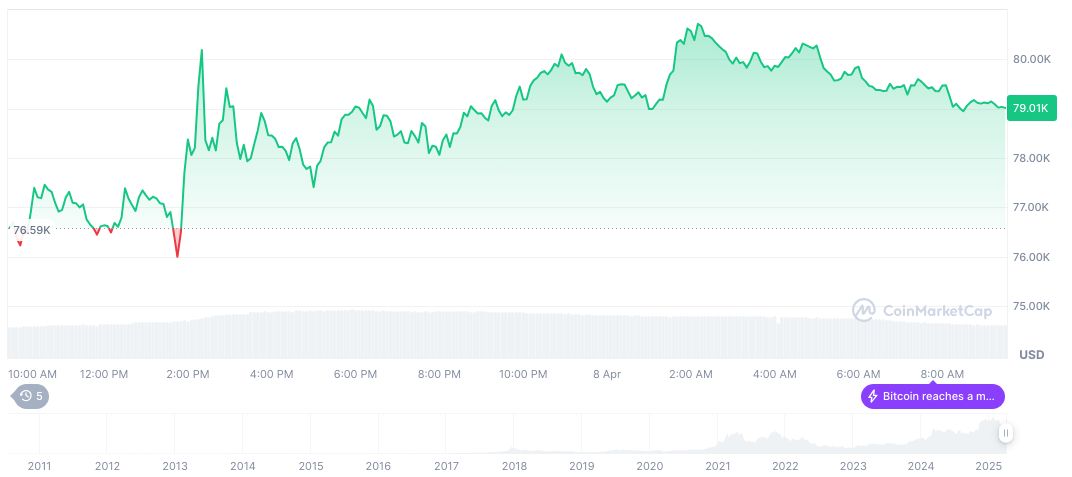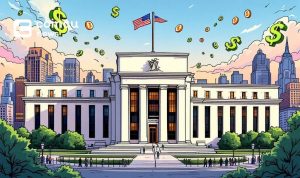- Nasdaq gains 4.15% amid tariff talks.
- Bitcoin nears $80,000 amidst market volatility.
- Strong correlation observed between global economic policies and market responses.
On April 8, 2025, U.S. stock markets rebounded sharply, with Nasdaq gaining 4.15%, as discussions on tariffs showed promising developments.
Recent tariff negotiations drive positive investor sentiment across financial markets, sparking movements in both stocks and cryptocurrencies.
Bitcoin Nears $80,000 Amid Market Volatility
U.S. stock indices rose significantly on April 8, 2025, amid optimism surrounding tariff negotiations. Treasury Secretary Scott Bessent stated potential favorability in ongoing tariff talks, emphasizing that there is “maximum negotiating leverage right here, right now.” Semiconductor stocks, notably Nvidia, showed a 3.53% increase, linked to possible exemptions.
Bitcoin’s value fluctuated sharply, hitting $81,000 before settling around $79,670. Trading volumes for Bitcoin surged by 73%, indicating renewed investor activity. Solana gained 8% following market trends among major cryptocurrencies.
Market participants highlighted the correlation between global economic policies and financial markets. Analysts cautioned about premature optimism while emphasizing the interconnectedness of crypto and traditional assets.
Market Data and Insights
Did you know? Historically, similar tariff-related discussions have led to increased volatility across global markets, underscoring trading strategies based on policy shifts.
Bitcoin, the leading cryptocurrency, was priced at $80,034.96, with market figures indicating a recent trading volume of approximately $62.49 billion, despite a 22.88% decrease. Its 24-hour price gain was logged at 2.10%. The market cap reached $1588.57 billion, with an evident hold in market dominance at 62.60%, according to CoinMarketCap.

Experts suggest that potential advancements in tariff negotiations could elevate global economic growth. However, current volatility highlights the adaptive behavior of financial markets. Lessons from 2019’s tariff-induced volatility offer insights for traders, showcasing sharp market responses to international economic policies.























